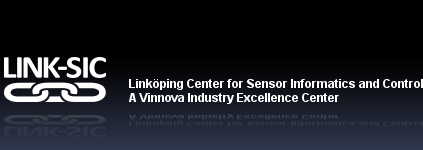Modeling and Control of Robotics Manipulators
There is a strong trend within the robotics industry to build lighter and hence more mechanically flexible robots.  As a result there is a need to use new, advanced motion control concepts where additional sensors, in addition to the conventional motor angular positions sensors, can be included. To make the result useful in an industrial setup the tuning of the controllers must be at least semi-automatic, for example, using model parameters identified from the real robot. Within this sub-project, the results from the past works in LINK-SIC sub-projects on identification and sensor informatics are used to provide improved control performance. The focus is mainly on the following areas:
As a result there is a need to use new, advanced motion control concepts where additional sensors, in addition to the conventional motor angular positions sensors, can be included. To make the result useful in an industrial setup the tuning of the controllers must be at least semi-automatic, for example, using model parameters identified from the real robot. Within this sub-project, the results from the past works in LINK-SIC sub-projects on identification and sensor informatics are used to provide improved control performance. The focus is mainly on the following areas:
- Iterative Learning Control based on sensor fusion of motor measurements and arm sensors. ILC enables the robot to reach an accuracy close to the repeatability level by compensating systematic errors when performing the same motion.
- Improved stiffness, robustness, and path accuracy by using additional sensors. Different control strategies and different sensor locations are examples of what will be covered.

